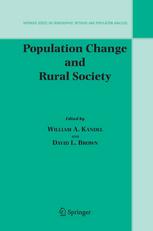

Most ebook files are in PDF format, so you can easily read them using various software such as Foxit Reader or directly on the Google Chrome browser.
Some ebook files are released by publishers in other formats such as .awz, .mobi, .epub, .fb2, etc. You may need to install specific software to read these formats on mobile/PC, such as Calibre.
Please read the tutorial at this link: https://ebookbell.com/faq
We offer FREE conversion to the popular formats you request; however, this may take some time. Therefore, right after payment, please email us, and we will try to provide the service as quickly as possible.
For some exceptional file formats or broken links (if any), please refrain from opening any disputes. Instead, email us first, and we will try to assist within a maximum of 6 hours.
EbookBell Team

0.0
0 reviewsCALVIN L. BEALE In considering how to introduce the subject of rural population change in st the 21 Century, I ?nd myself re?ecting on my own experience as a demographer for the U. S. Department of Agriculture. When I arrived at the Department, the post-World War II modernization of farming was well under way. Each year, my colleague Gladys Bowles and I had the unpopular task of announcing how much the farm population had decreased in the prior year. It was hard to say that the phenomenon was someone’s fault. Dramatic reductions in labor requirements per unit of agricultural output were occurring everywhere and not just in the United States. But politically, blame had to be assigned, and whichever political party was not in the White House was certain to place the blame squarely on the current administration. The demographic consequences of this trend were major. In a 22-year period from 1941 to 1962, the net loss of farm population from migration and cessation of farming averaged over a million people per year. It took eight years after the war before an administration was willing to begin to talk about the need to diversify rural employment. By that time, farm residents had already become a minority of rural people. However, well into the 1970s, I continued to receive inquiries from people who still equated rural with farm or who could not envision what rural-nonfarm people did for a living.